- Home
- Raymond Benson
The Rock 'n Roll Detective's Greatest Hits - A Spike Berenger Anthology
The Rock 'n Roll Detective's Greatest Hits - A Spike Berenger Anthology Read online
THE ROCK ‘N’ ROLL DETECTIVE’S
GREATEST HITS
An Anthology
By Raymond Benson
Digital edition published by Crossroad Press
Anthology © Copyright 2011 by Raymond Benson
A Hard Day’s Death © Copyright 2008 by Raymond Benson
Dark Side of the Morgue and On the Threshold of a Death © Copyright 2009 by Raymond Benson
A Hard Day’s Death and Dark Side of the Morgue were originally published by Leisure Books. On the Threshold of a Death was originally published by Crimespree Magazine.
Cover design by: David Dodd
LICENSE NOTES:
This eBook is licensed for your personal enjoyment only. This eBook may not be re-sold or given away to other people. If you would like to share this book with another person, please purchase an additional copy for each person you share it with. If you're reading this book and did not purchase it, or it was not purchased for your use only, then you should return the vendor of your choice and purchase your own copy. Thank you for respecting the hard work of this author.
OTHER PRODUCTS BY RAYMOND BENSON
Fiction
A Hard Day's Night
Artifact of Evil
Dark Side of the Morgue
Evil Hours
Face Blind
Sweetie’s Diamonds
The Black Stiletto
Torment
James Bond 007 Novels
The Union Trilogy (anthology)
The Man With the Red Tattoo
Never Dream of Dying
DoubleShot
High Time to Kill
The Facts of Death
Zero Minus Ten
Die Another Day (based on the screenplay by Neal Purvis & Robert Wade)
The World is Not Enough
(based on the screenplay by Neal Purvis & Robert Wade and Bruce Feirstein)
Tomorrow Never Dies (based on the screenplay by Bruce Feirstein)
Tom Clancy’s Splinter Cell (written as “David Michaels”)
Tom Clancy’s Splinter Cell
Tom Clancy’s Splinter Cell—Operation Barracuda
Metal Gear Solid
Metal Gear Solid
Metal Gear Solid 2—Sons of Liberty
Non-Fiction
The Pocket Essentials Guide to Jethro Tull
The James Bond Bedside Companion
TABLE OF CONTENTS
A HARD DAY’S DEATH: A Spike Berenger Rock ‘n’ Roll Hit
Track Listing
1. Rock ‘n’ Roll Suicide (performed by David Bowie)
2. Mood for a Day (performed by Yes)
3. LA Woman (performed by The Doors)
4. Roll With the Changes (performed by REO Speedwagon)
5. Morning Has Broken (performed by Cat Stevens)
6. Jail House Rock (performed by Elvis Presley)
7. Family Affair (performed by Sly and the Family Stone)
8. Jesus is Just Alright (performed by The Doobie Brothers)
9. Mother (performed by John Lennon)
10. Trouble Every Day (performed by Frank Zappa & the Mothers of Invention)
11. Son of Your Father (performed by Elton John)
12. Band on the Run (performed by Wings)
13. Boys Don’t Cry (performed by The Cure)
14. Angry Eyes (performed by Loggins and Messina)
15. Wild in the Streets (performed by the Circle Jerks)
16. For What It’s Worth (performed by Buffalo Springfield)
17. Wicked Messenger (performed by Bob Dylan)
18. Legend in Your Own Time (performed by Carly Simon)
19. Prove It All Night (performed by Bruce Springsteen)
20. Free Fallin’ (performed by Tom Petty)
21. Something to Believe In (performed by The Ramones)
22. Night Moves (performed by Bob Seger & the Silver Bullet Band)
23. Dead Man’s Party (performed by Oingo Boingo)
24. Stir It Up (performed by Bob Marley & the Wailers)
25. Black Limousine (performed by The Rolling Stones)
26. Doctor Rock (performed by Motörhead)
27. Higher Ground (performed by The Red Hot Chili Peppers)
28. Nothing is Easy (performed by Jethro Tull)
29. Danger Zone (performed by Kenny Loggins)
30. Barrel of a Gun (performed by Depeche Mode)
31. Run Like Hell (performed by Pink Floyd)
32. Watching the Detectives (performed by Elvis Costello & the Attractions)
33. A Hard Day’s Night (performed by The Beatles)
ON THE THRESHOLD OF A DEATH: A Spike Berenger Rock ‘n’ Roll Hit Single
Track Listing
1. Side A
2. Side B
DARK SIDE OF THE MORGUE: A Spike Berenger Rock ‘n’ Roll Hit
Track Listing
1. Too Old to Rock ‘n’ Roll—Too Young to Die (performed by Jethro Tull)
2. Wouldn’t It Be Nice? (performed by The Beach Boys)
3. Taxman (performed by The Beatles)
4. We Are Family (performed by Sister Sledge)
5. King of Pain (performed by The Police)
6. Hey Joe (performed by The Jimi Hendrix Experience)
7. What To Do (performed by Status Quo)
8. Witchy Woman (performed by Eagles)
9. Jumping Someone Else’s Train (performed by The Cure)
10. Cops and Robbers (performed by Bo Diddley)
11. Photographs and Memories (performed by Jim Croce)
12. Old Time Rock & Roll (performed by Bob Seger & the Silver Bullet Band)
13. Assassin (performed by Motörhead)
14. Would I Lie to You? (performed by Eurythmics)
15. Long Time Gone (performed by Crosby, Stills & Nash)
16. Taken by Surprise (performed by The Outfield))
17. Living Dead Girl (performed by Rob Zombie)
18. Angel of Death (performed by Thin Lizzy)
19. The Voice (performed by Ultravox)
20. Walk on the Wild Side (performed by Lou Reed)
21. Voyage 34 (performed by Porcupine Tree)
22. Ain’t Wastin’ Time No More (performed by The Allman Brothers Band)
23. Down In It (performed by Nine Inch Nails)
24. Doctor Doctor (performed by UFO)
25. Down With the Sickness (performed by Disturbed)
26. Soul Sacrifice (performed by Santana)
27. In My Time of Dying (performed by Led Zeppelin)
28. All the Madmen (performed by David Bowie)
29. Brain Damage (performed by Pink Floyd)
30. Lucky Man (performed by Emerson, Lake & Palmer)
A HARD DAY'S DEATH
FOR RANDI
LINER NOTES
Although real-life rock stars such as John Lennon, David Bowie, and others appear or are referenced in this book, it is a work of fiction. The characters of Flame, his family, and fellow musicians are not meant to represent any persons, living or dead. Needless to say, John Lennon and David Bowie never knew a musician named Flame.
The author and publisher wish to thank Kenny Wylie, Dean Zelinsky, James McMahon, and Lieutenant Gene White for their help in the preparation of this book.
“I believe rock ‘n’ roll is dangerous…”
—DAVID BOWIE, in Rolling Stone, 1976
1
Rock ‘n’ Roll Suicide
(performed by David Bowie)
There was death in the air.
It was a comment that Gina Tipton had m
ade before the show and Kenny Franklin had thought nothing of it. “Gina the Gypsy,” as she used to be called back in her hippie days, had a reputation for making spooky predictions. A day later Franklin would remember Gina’s words and what they portended, but he currently had other things on his mind.
Franklin, who held the all-important job of acting as Flame’s tour manager, signed off on the union time cards and sent the crew home. The stage was clean and the tour was done. The show had been a success, such as it was, and the Meet ‘n’ Greet had gone more or less smoothly. Flame, of course, had gotten into volatile arguments with no less than three different individuals before and after the show. But all things considered, the tour ended on an upbeat note.
“Hey Kenny,” called Louis, the band’s monitor and guitar tech. He held up a bank moneybag. “What do I do with this?”
Franklin frowned. “Oh shit, didn’t Al take that with him?”
Louis shrugged. “I guess he didn’t. I have it.”
“Damn.” Franklin took the heavy bag from his assistant. The bag held the night’s receipts and concession money. “I’m flying to Nashville tomorrow morning. I don’t want to be stuck with this. Can you take it to Flame’s office tomorrow?”
Louis shook his head. “I’m driving out to my folks’ place in Jersey as soon as I get out of here. I’m on vacation now.”
Franklin cursed. “That means I have to drop it by there tonight. All right, Louis, see you next time. Stay out of trouble.”
“You too, Kenny.”
Franklin held on to the bag and turned the theater over to the venue’s stagemanager to lock up. He went out the stage door and walked towards Broadway where he hoped to catch a cab. It was nearly two in the morning but surely there would be some taxis on such a major thoroughfare. New York City never slept.
He waited only two minutes. He flagged down a cab heading north and got in the back seat.
“Turn her around, we gotta go to Greenwich Village,” he told the driver. Without a word the driver slapped the meter and took off. At the light he made an illegal U-turn and drove south on Broadway. The going was smooth until the cab reached Columbus Circle, where several NYPD patrol cars sat with lights flashing. An officer slowly waved cars through a roadblock and prevented any from turning east on 57th Street.
“What’s going on?” the cab driver asked the officer as he moved past him.
“The Jimmys pulled another show at the bottom of Central Park. Keep moving, sir.”
The cab moved on and continued south.
“Those lunatics,” the driver said. “Them and those nutty Cuzzins oughta be shot on sight.”
Franklin came close to agreeing. The Jimmys and the Cuzzins were relatively new phenomena in New York City. Technically they were mysterious, ruthless, and very violent rival gangs that vied for control of the illegal drug trade in the metropolitan area. And, like most gangs, they had their share of responsibility for thefts, vandalism, and murders. On the other hand, they were rock bands that kept their identities secret. The Jimmys were punks that made the Sex Pistols look like the Partridge Family. They wore grotesque masks supposedly made from the skin of corpses—patterned after the “Leatherface” character from the Texas Chainsaw Massacre movies. The Cuzzins fashioned themselves after the black leather-look of the Hamburg-era Beatles. Beneath their greasy, slicked back hair, the Cuzzins wore black facemasks, and specialized in 1950s rock ‘n’ roll. Both bands occasionally held impromptu “guerilla” concerts around the city, using stolen portable equipment that they destroyed and left behind when the police arrived. These happenings attracted a very rough crowd and a riot almost always ensued during and after one of these bands’ so-called performances. They frequently started fires and damaged public property. Sometimes there were deaths. Thus the bands’ sets were never very long. By the time the Jimmys or Cuzzins had played three songs, the police were already on the way. The gangs then enjoyed leading the cops on wild and reckless chases through the city streets, usually on motorcycles. To date none of the major players in either group had ever been caught, and no one knew who the leaders were. Any arrests made were usually of street soldiers who were bailed out quickly by high-powered attorneys—just like in the old days of the mafias.
Franklin forgot about the Jimmys and the Cuzzins as soon as the cab entered Greenwich Village. Flame lived in a three-story townhouse on Charles Street between 7th Avenue and Bleecker Street. The bottom floor was the office of Flame Productions and it had a separate entrance from the living quarters on the top two floors. It was one of Flame’s three homes. Franklin had spent some time at the mansion in Hollywood but had never been to the flat in London. He considered the huge place in Hollywood to be a waste. Flame was rarely there. For some reason the rock star preferred Manhattan to LA and when he wasn’t on tour he stayed on the East Coast. There had been talk of selling the Hollywood home and buying a large estate near New Rochelle.
Traffic was light at that time of night and the streets in the Village were dark and empty. But as the cab pulled onto Charles Street, a figure darted in front of the vehicle from out of the shadows, causing the driver to brake hard and startle his passenger.
“Damn!” Franklin blurted. The pedestrian, caught in the glare of the headlights, stared wide-eyed into the cab.
It was Flame’s son from his first marriage. Adrian Duncan.
“What the… hey, wait a second,” Franklin said. Duncan started to run as Franklin rolled down the window.
“Adrian?” he shouted, but the figure was already around the corner.
“You know that guy?” the driver asked.
“Yeah. Never mind, just go on.”
That was odd, Franklin thought. What was Adrian doing down in his father’s neck of the woods? Franklin remembered seeing Adrian with his mother, Gina Tipton, at the venue before and after the concert. Adrian had appeared very upset with his father, but that was nothing new. Adrian Duncan and Flame never got along and apparently there had been some unpleasantness between them in Flame’s dressing room before the show.
“The townhouse is up there on the right.” Franklin had the cab driver park in front of the building and wait. “We’re going back to mid-town after I drop something inside,” he said. “Keep the meter running.”
Franklin got out of the car and used his key to open the door marked “FP Inc.” As soon as he was inside, he shut the door and turned on the lights.
He immediately felt a chill run up his spine.
The office was a mess. Papers had been flung all over the room and the frames with Flame’s gold records had been smashed. Broken glass lay everywhere. A bottle of Jack Daniel’s was overturned on top of the mahogany desk, its contents spilled in a large puddle, dripping onto the wood floor.
“Flame?” he called. The door that led to the private quarters upstairs was wide open. Lights were on in the stairway. Franklin poked his head through and called again toward the second floor. “Flame, are you there?”
Then he heard it. Music, coming from above. The song was vaguely familiar. Franklin slowly moved up the stairs, the moneybag still clutched in his hand. As he reached the second floor, he recognized the music. It was Flame’s big hit, “Forever Hot,” only it was skipping, over and over. Flame must have put the old vinyl LP on a turntable but the record was scratched. The music drifted from the bedroom on the third floor.
“Flame? It’s me, Kenny!” he called again.
This time he went up the stairs at a brisker pace. He hoped nothing was wrong—it could be that Flame had just gotten drunk, broke up his office and gone to bed. Franklin was slightly concerned that he might walk in on Flame and his weird girlfriend Brenda doing the nasty. That would be truly embarrassing.
When he got to the third floor landing Franklin saw that the bedroom door was ajar. The skipping record was getting on his nerves, the chorus not quite resolving—
“You make me forever hot baaaby yeah, don’t y—
you make forever hot baaaby y
eah, don’t y—
you make me forever hot baaaby yeah, don’t y—”
Franklin knocked loudly on the door. “Flame, what’s going on in there?” The door swung open and Franklin’s heart nearly failed.
An overturned stepladder lay on the carpet beneath a pair of dangling feet that belonged to Peter Flame, his face purple and bloated and his head cocked at a freakish angle by a noose. He hung like a rag doll from a rope that had been tied to a light fixture in the ceiling.
Forever dead.
2
Mood for a Day
(performed by Yes)

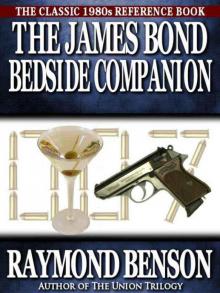 The James Bond Bedside Companion
The James Bond Bedside Companion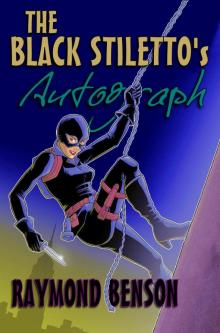 The Black Stiletto's Autograph
The Black Stiletto's Autograph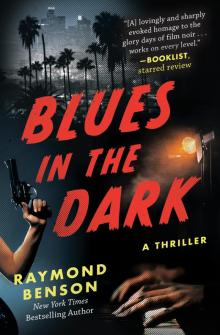 Blues in the Dark
Blues in the Dark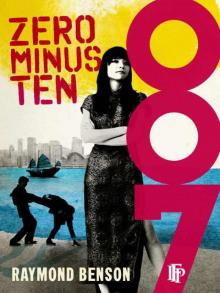 Zero Minus Ten
Zero Minus Ten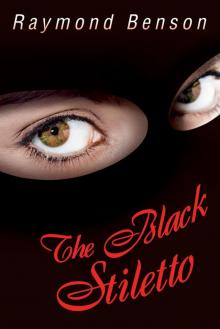 The Black Stiletto
The Black Stiletto Doubleshot
Doubleshot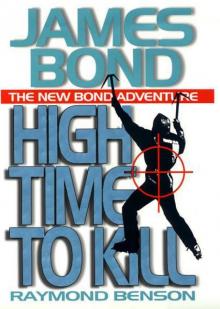 High Time To Kill rbb-3
High Time To Kill rbb-3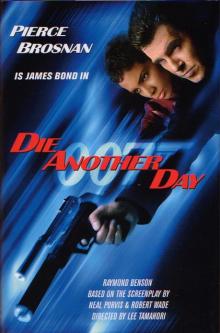 Bond Movies 07 - Die Another Day
Bond Movies 07 - Die Another Day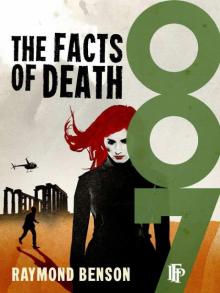 The Facts Of Death
The Facts Of Death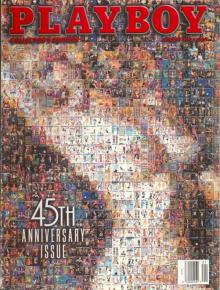 Midsummer Night's Doom
Midsummer Night's Doom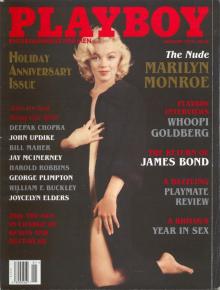 Blast from the Past
Blast from the Past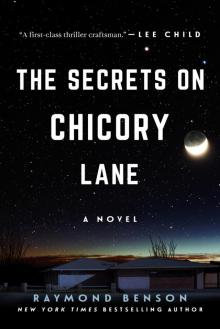 The Secrets on Chicory Lane
The Secrets on Chicory Lane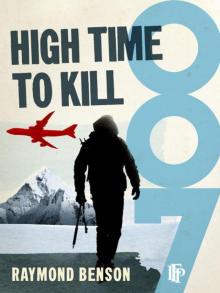 High Time To Kill
High Time To Kill The Black Stiletto: Black & White
The Black Stiletto: Black & White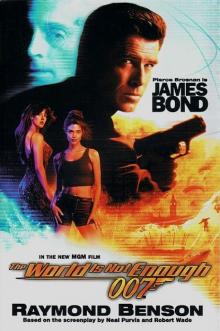 The World Is Not Enough jb-1
The World Is Not Enough jb-1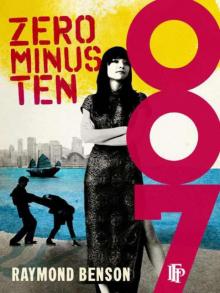 Zero Minus Ten rbb-1
Zero Minus Ten rbb-1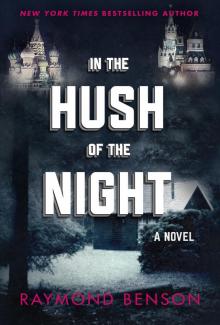 In the Hush of the Night
In the Hush of the Night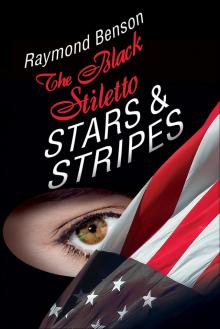 The Black Stiletto: Stars & Stripes
The Black Stiletto: Stars & Stripes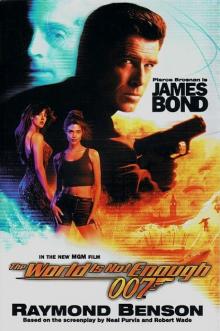 Bond Movies 06 - The World Is Not Enough
Bond Movies 06 - The World Is Not Enough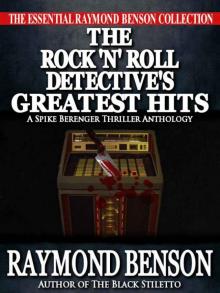 The Rock 'n Roll Detective's Greatest Hits - A Spike Berenger Anthology
The Rock 'n Roll Detective's Greatest Hits - A Spike Berenger Anthology Never Dream Of Dying
Never Dream Of Dying